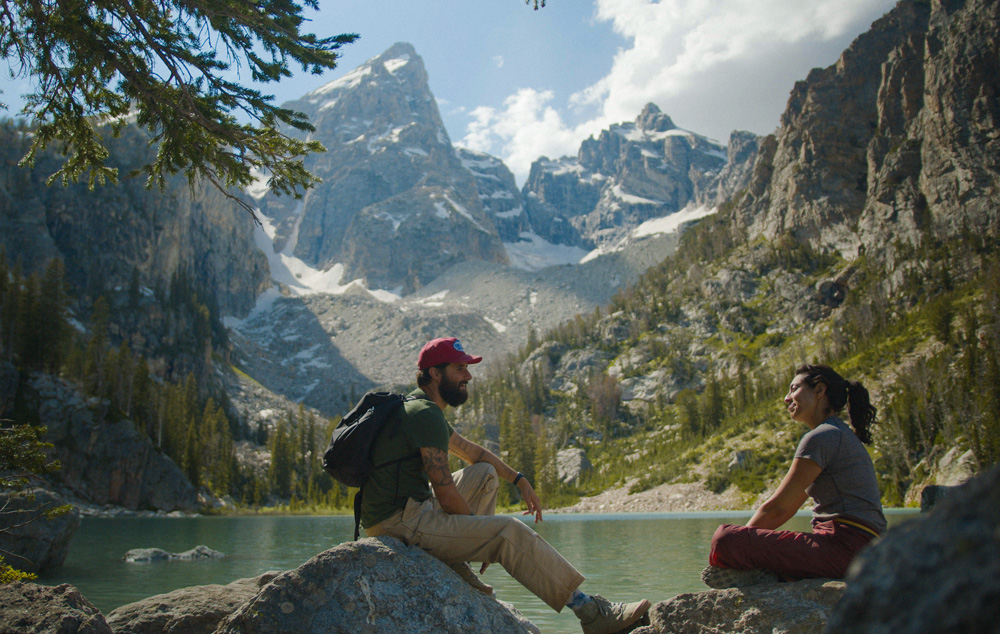Neither Loren (Derrick Joseph DeBlasis) or Amy (Claudia Restrepo) has a home in Wyoming when “Peak Season” begins, but that isn’t to say it isn’t where they’re most comfortable. The former has become well-adjusted to having few attachments outside of the van he makes his home in and survives as a wilderness guide to those passing through like Amy, who is in need of some quiet time in nature as she prepares to wed her fiancee Max (Ben Coleman) and commit to a life in general that’s been laid out for her after getting her MBA. There may be an obligation to Ben and to her father, whose tireless hours spent driving a cab, enabled her to envision a life with less to worry about financially, but it’s created stress elsewhere for Amy when she finds herself having more in common with Loren, who doesn’t need more than a six-pack of beer and some nice scenery to have a good time.
Such simple pleasures are often overlooked, but as co-directors Steven Kanter and Henry Loevner demonstrate in stripping things down to their bare essentials in their second feature, they can be deeply rewarding. The duo literally didn’t have much to work with for their first feature collaboration “The End of Us,” making the best of a bad situation as they convened a cast with COVID protocols in place for a romantic comedy set at the start of the pandemic with the clever conceit that a couple that had broken up moments before lockdown had to honor the stay-in-place orders. The film was a breath of fresh air, even if it involved everyone wearing masks, and it’s no surprise to see that they’ve headed to the open plains for their follow-up which is equally refreshing as Loren and Amy strike up a friendship and perhaps something more while trudging through rivers to fish and mountains to hike when Ben is called away on business.
As much of a strong lay of the land as Loren has as a “skid” (what the guides are called in these parts), Kanter and Loevner are just as aware of the well-worn territory they’re traversing, knowing exactly where to lean into some familiar charms while taking it to new places in an era where so many are looking to disconnect from lives where cell phones make it possible to be available all the time and careers demand more and more. The idea of defining success on your own terms seems particularly poignant when “Peak Season” can rely on its two engaging leads and the great outdoors to be enough to feel deserving of the big screen and as the film makes its way into theaters after a celebrated festival run that began last year at SXSW, the co-directors spoke about their collaboration, saving the craziest day of filming for last and the gifts nature could give them throughout the production.
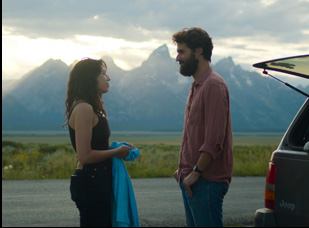
Henry Loevner: Pretty much. After “The End of Us,” Steven and I were chatting about next projects and my family’s been living in the Wyoming area for the last 15 years. I spent a lot of time there growing up, so certainly in the back of my mind, the idea of shooting a film in Wyoming was always really enticing to me, but the prospect of getting outside after shooting a movie in quarantine in three to four rooms was very exciting to us.
Steven Kanter: Yeah, we had an amazing time shooting “The End of Us” and that was a respite for us during that early phase of COVID because we found an AirBnB, did all the safety precautions beforehand and even that was like getting away. But cumulatively, Henry and I were really excited by the prospect of getting outside, so we were happy that worked out.
Henry, did you actually know much about these wilderness guides, known as the skids, beforehand or did you come to know them?
Henry Loevner: I’ve certainly known plenty of people working in the guiding industry, just encountering people like that in the Wyoming area. But I certainly wanted to do a lot of research going into this film. Part of the inspiration was conversations that I had had with rafting guides about their lifestyle. It’s obviously a very romantic way to live your life, but it’s also really hard and very lonely, so I found that to be pretty compelling and a really great setup for a drama.
I reached out to a few guides that I already knew personally, a few people that were friends of friends, not just in Wyoming but throughout the country and conducted just a series of interviews with people asking about how they got into it and what is the day to day like? What I got was a picture of a lifestyle very much like what you see in the movie, which is incredibly free and liberating and adventurous, but also, again, very hard and at times lonely. You’re living out of the suitcase most of the time. So we were fortunate to have many people who were very generous in sharing their stories with us.
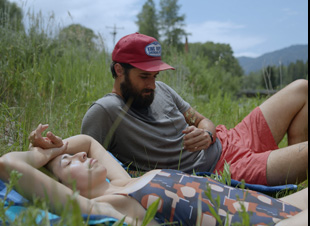
Steven Kanter: Yeah, this film was my first time actually visiting Wyoming, and when Henry and I were talking about the script early on, [we were] relying a lot on his experience growing up, spending summers there and all of these aspects of the community that are very present in the script. From a technical perspective, I would like to think that we benefited from co-directing this and being able to rely on Henry’s knowledge of certain areas and then I was wide-eyed and very, very excited and enthusiastic just every moment, from our first scouts driving into town. That was the first time I was seeing these locations, so I felt like I was definitely identifying with the Amy character.
Henry Loevner: Yeah, Steve brought not only his incredible story and filmmaking sensibilities, but also a fresh perspective to the location itself. There are a lot of things that I take for granted about Wyoming because I’m a little bit more familiar, so it’s really helpful to see it through fresh eyes. We definitely built up the story with some of these locations in mind, and they were [primarily] places that I knew we would have access to. We were also lucky, particularly with some local businesses who were generous enough to let us shoot in the Million Dollar Cowboy Bar, which is an iconic local spot that you see around the middle of the film. We had no guarantee that they were going to let us shoot there, but the community was extremely accepting and hospitable about welcoming us, whether it’s their business or their homes.
Steven Kanter: We also got pretty lucky with some of the locations. As Henry mentioned, we had certainly our wishlist, but then driving back one day after shooting, we would see a ravine somewhere and the sun is hitting it just correctly, so we created this shared Google Maps where we’d have our backups, some hidden gems that we found and we were happy to be able to incorporate those as well.
The central house that Amy and her fiancee Max stay in is a really amazing location in its own right with those huge, ceiling-to-the-floor glass windows. How did that come into the mix?
Henry Loevner: Yeah, we have a family friend who lives in town and owns this incredible, very lavish house and they gave us a couple of days. We were only allowed to shoot in certain sections of the house, so we had to be pretty deliberate and in fact, the house that you see in the film is actually a composite of three different houses and we had to use some movie magic to make it work. But that location was incredible and the movie could not have happened were it not for the generosity of this family.
Were Claudia and Derrick immediately in mind to play these lead characters?
Steven Kanter: Yeah, this whole cast and crew, we all go back quite a bit. We’ve had day jobs working together and also have jumped in to help out and assist with each other’s creative projects. We’ve had Derrick and Claudia play opposite each other in at least five or six pieces, whether they were short films or web series, and we knew we would be able to rely on them. They bring such a natural chemistry already that given the other difficulties of production, just [having] a relatively limited crew, we certainly saw so many advantages and were certain they would be able to both embody these characters and the written lines, but also add at times improvisation that just felt really natural.
Was there anything that happened you may not have expected, but could embrace? It could’ve been an improvisation, but also a quality the film has now.
Steven Kanter: We weirdly got lucky with certain lightning strikes. It never struck twice in the same place, but fortunately we were rolling [film] on the first time, so there’s a few scenes where we use it, but there’s a particular scene toward the end that’s in some ways the emotional climax of the piece where we’re shooting one of our characters and you see this perfectly. I don’t even know if we realized it until we were reviewing footage after, but it’s this perfectly placed lightning bolt in the distance, and we [thought], “Wow, if we had planned for that, it definitely wouldn’t have happened.”
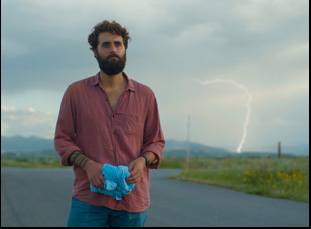
Henry Loevner: Yeah, with “The End of Us,” we really generated the idea together at the same time and built out the script together. This one started off a little differently. We were chatting about different hypothetical projects and I had already written an early draft of this script and presented it to Steve and then from there, we worked together to hone and craft new drafts of the script. Then of course, Steven’s also an incredibly talented composer, so he’s bringing so many unique ideas. I’m not really a musician. That’s all like a mystery to me, what he’s doing.
Steven Kanter: Although to Henry’s credit, I remember [he] gave a very pertinent musicology note to one of the pieces I wrote, like “maybe this should be like a major key and versus a minor.” And I [thought], “Brilliant!” That really kind of encapsulates a lot of the collaboration is once we’ve given ourselves the green light to make a project like this, we really are in pretty solid lockstep with a lot of the aspects technically and creatively. For example, the editing is something that we’ve really stumbled upon a good collaboration where we’ll divvy off parts of the script or the film after it’s shot and we’ll do full passes on three or four sequences each. Then we’ll share it with each other or trade project files.
At the premiere you had mentioned actually a final day of filming in Los Angeles that was the hottest day that year, and you had your most famous actors on set. What was it like to cap off the shoot that way?
Henry Loevner: Yeah, there were a few scenes we did shoot in L.A. because just for budget reasons and we couldn’t afford to fly out all of our cast. We were shooting with Fred Malamed and Stephanie Courtney, and we also were working with a larger crew than normal. The film was shot for the most part with a very skeleton crew of Steven and I operating the cameras and a couple of people behind camera helping us out. For this particular shoot, we were shooting in a high-end restaurant that added a sense of stakes to it as well and we were terrified that the AC wasn’t going to be working. Fortunately, Stephanie and Fred were consummate professionals and over-delivered, but everything went okay. Trying to wrap out the film in the very last day and ending with what was arguably the hardest day in terms of production was stressful, but it was funny bringing in a larger crew for that particular shoot day. It just felt like we were suddenly on a different movie.
Steven Kanter: It’s weird for us to be in a position where we’re co-directing and also not operating two cameras. We were like, “What do we do with our hands? We’re not holding onto a camera here.” But it was great. We were able to really focus in and be available to the larger cast that day.
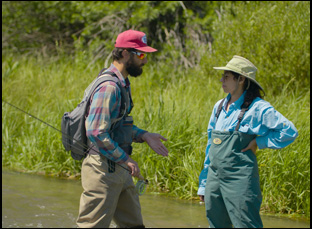
Steven Kanter: For “The End of Us,” of course, it was still pretty early on in the first year or two of the pandemic and we were lucky enough to be accepted to a number of festivals, but most of those festivals were virtual, so we just couldn’t attend in person. So we feel very lucky and fortunate this year that we’ve been able to tour with this film and travel to some of these film festivals across the country. It’s been our favorite thing in the world because you work on a film and so often it’s such a delayed kind of gratification. It’s not like a musical performance or theater where the audience is right there. For me, it’s when you see it and you get to show it to a new audience and people that don’t know you personally that aren’t reviewing cuts for editing notes, it’s like the best. You almost forget that that’s the reason you’re doing it.
Henry Loevner: Yeah, particularly for the Wyoming and Idaho audiences, we showed them the film a couple of months ago. That was incredible because they were also laughing at all the inside jokes that were very specific to the community. That’s an experience you can never replace with like streaming something online.
“Peak Season” opens on August 2nd in limited release, including Los Angeles at the LOOK Cinemas in Glendale and the Lumiere Cinema at the Music Hall, New York at the LOOK Cinemas on 57th St., and Chicago at the Regal Crystal Lake. A full list of theaters and cities is here.




